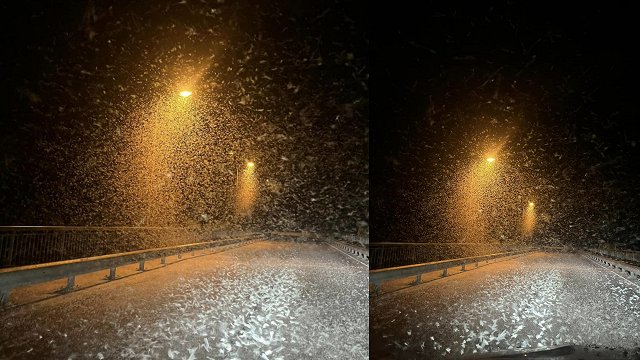Thousands of pieces of abandoned and stray fishing gear drift in the dark waters of the Baltic Sea. They are deadly traps that can continue to catch living creatures for years and pollute the sea with microplastics. This year, for the first time, the first such nets, known as "ghost nets", were removed from Latvian coastal water.
Members of the "Baltijas ronis" (Baltic seal) scuba club were involved. Their expertise and familiarity with the Kurzeme coastline and the weather conditions are invaluable. But today they are not visiting an old shipwreck for pure enjoyment – they are retreiving abandoned fishing nets, which pose a hazard to the marine environment.
"A large number of objects, well-preserved ones at that, are covered with nets. Accordingly, you can see some parts, but you cannot look deeper. You cannot examine some parts of them, which are important to know what is there at all. This is that's why we dive," said Vents Lasis, a diver of the "Baltijas Ronis" club.
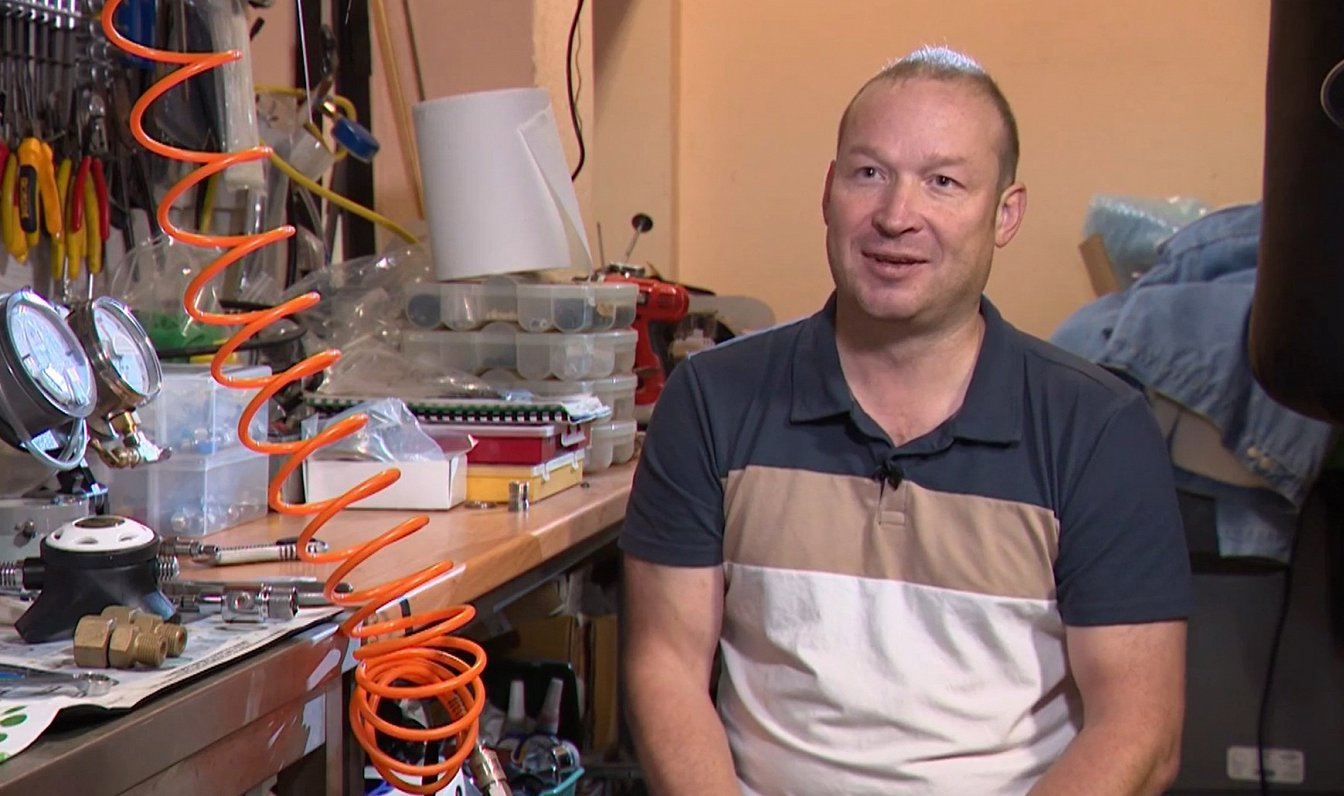
Preparation begins several days in advance. Scuba diving gear must be checked and inventory assembled. The main thing is safety. Net retrieval is difficult and dangerous. This can only be done by technical divers who have special knowledge and training.
"First of all, you must feel good down there, you must be able to do it. And secondly, you must do it in pairs. You may not see a net above you, or somewhere on the side. You may get caught by some part of the inventory that you cannot even see, cannot feel. Then it's up to your colleague to cut you out of there. That's why we don't swim too close to the nets in daily diving if we don't need to," explained Vents Lasis.
The divers surveyed this particuar location in advance to learn the situation and plan their work. The wreck of a tugboat, around which the ghost nets are gathered, lies four kilometers from the port of Engure. It was found several years ago.
Dive, dive, dive
To reach the nets, divers must descend to a depth of 20 meters. It's a team effort. There must be at least three people: two dive and one stays in the boat. This is the first time they will bring up ghost nets from the depths.
"Before a dive, a plan is always made. What is the depth, how long you will be there, when you come up, all this is discussed. Accordingly, the person who is in the boat, he knows what is happening there. According to schedule, approximately what should happen when. On the other hand, with the partner there are certain hand signals that mean: up, down, wait as long as you have enough air. We communicate with these signs," explained Vents Lasis.
Depending on the depth, there is a limit to how long you can stay underwater. At a depth of 30 meters it is 20 minutes.
Magda Jentgen is a marine environment expert at WWF (World Wildlife Fund). Diving has been her hobby for many years, which helps her work. As Madga says, looking at the map, the Baltic Sea may seem relatively small by global standards. But when you enter the sea, it is not easy to find anything.
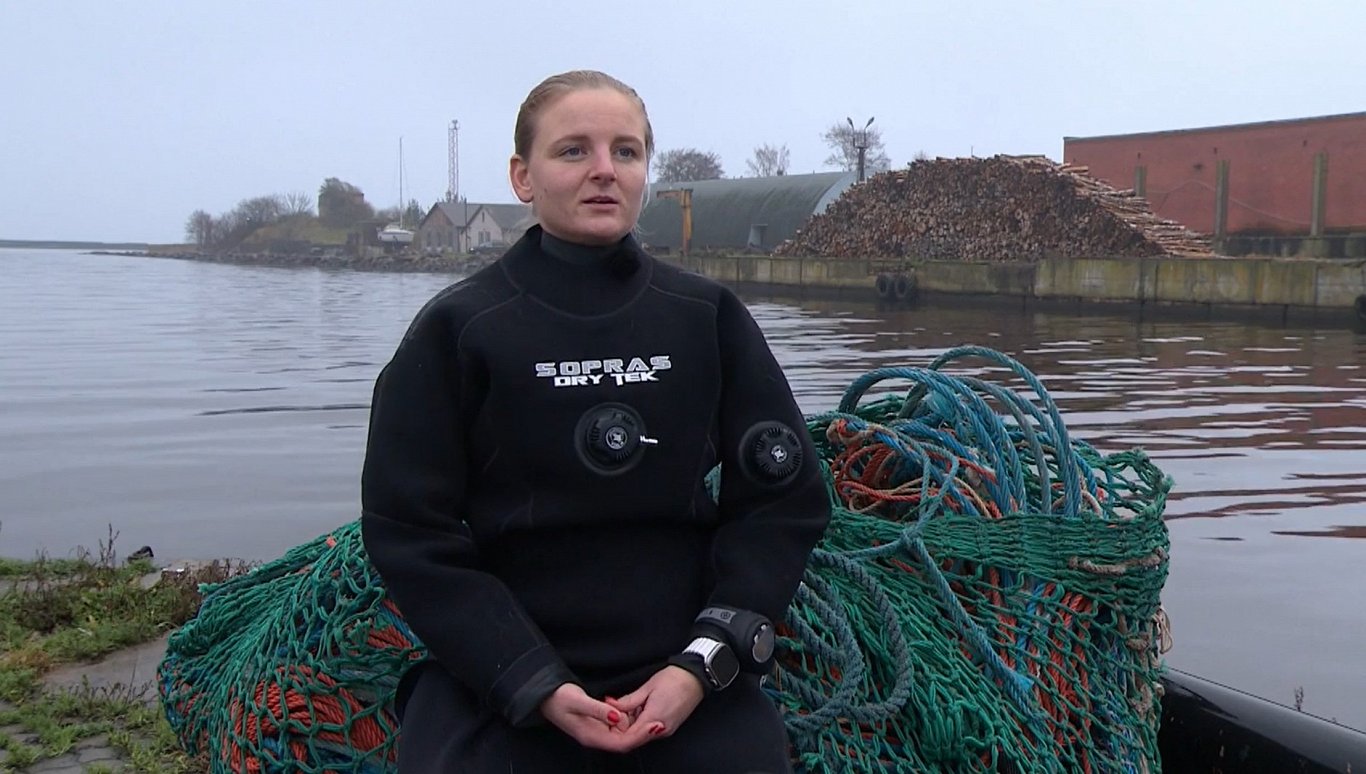
"The Baltic Sea is physically one of the most difficult places in the world to dive. We have storms very often. Visibility in the Baltic Sea is very bad, and if you need to find something when you basically can't see a meter ahead. Then one square kilometer is a massive area to search. And of course the temperatures are low, too. In the Baltic Sea, the temperature at the bottom of the sea is between two and four degrees all year round, it doesn't get much warmer. So [you need] this thick, bulky suit, you can't just jump in with a swimsuit bathing and find some nets.
Microplasma and endless fishing
Referring to a study, the expert of the WWF was able to say that up to 10,000 fishing nets or their fragments are lost in the Baltic Sea every year.
"It's a lot. Another thing we have to understand is plastic. So in waves, currents, hitting ships, rocks, it breaks down into microplastics. (..) It's already much more difficult to clean it, it ends up in fish, there's quite a bit of research on that. And through fish and other sea creatures, we're basically taking in, too. One study showed that the average person eats about one credit card per week. Because that's the amount of microplastics we take into our bodies through water, through seafood or whatever," Jentgen said.
Also, just because a net is lost or dumped at sea does not mean that it stops fishing.
"We'll see fish in them very often. Sometimes birds diving for fish because they get caught. And sometimes seals. Basically any animal can get caught in a net, and finding a way out of that net can be very, very difficult. It's one thing. The other thing is that these nets continue to float with the current, and get caught somewhere. They do quite significant damage to this environment," Jentgen explained.
Vents Lasis also confirmed that both seals and fish have been caught in "ghost nets": "If it's alive, we cut it out if possible. I've seen seals dead that floated to the bottom."
The Baltic Sea is often called the most polluted sea in the world. There are many reasons. Eutrophication, because too many nutrients enter the water – nitrogen and phosphorus from agricultural waste water. Historical chemical contamination from World War II. And plastic pollution.
Full fathom five
According to divers, it is not easy to cut nets into pieces with scissors or a knife. The heavy braids may be coiled in layers, there may be ropes, pieces of fishing trawls.
"You don't physically stand still, every movement moves you somewhere. You have to work with your flippers, and that consumes extra energy. The second thing is that you have nothing to hold on to. You swim in the water, every movement you make moves you to one side or the other," Lasis explained. .
This work is complicated by poor visibility: "Usually, a couple of meters are visible. Often, it happens by touch. In this case, it was somewhere around a meter, one and a half. (..) It's dark at the bottom, and when you turn on the light, all the small particles become white. Imagine a Turkish bath (..) and there are no lights, but there is a flashlight in your hand. (..) And you are not standing, but in the air, and with every movement of your hands you are moving somewhere."
The main thing is to always keep in mind that such nets are deadly traps for divers as well, says Vents Lasis.
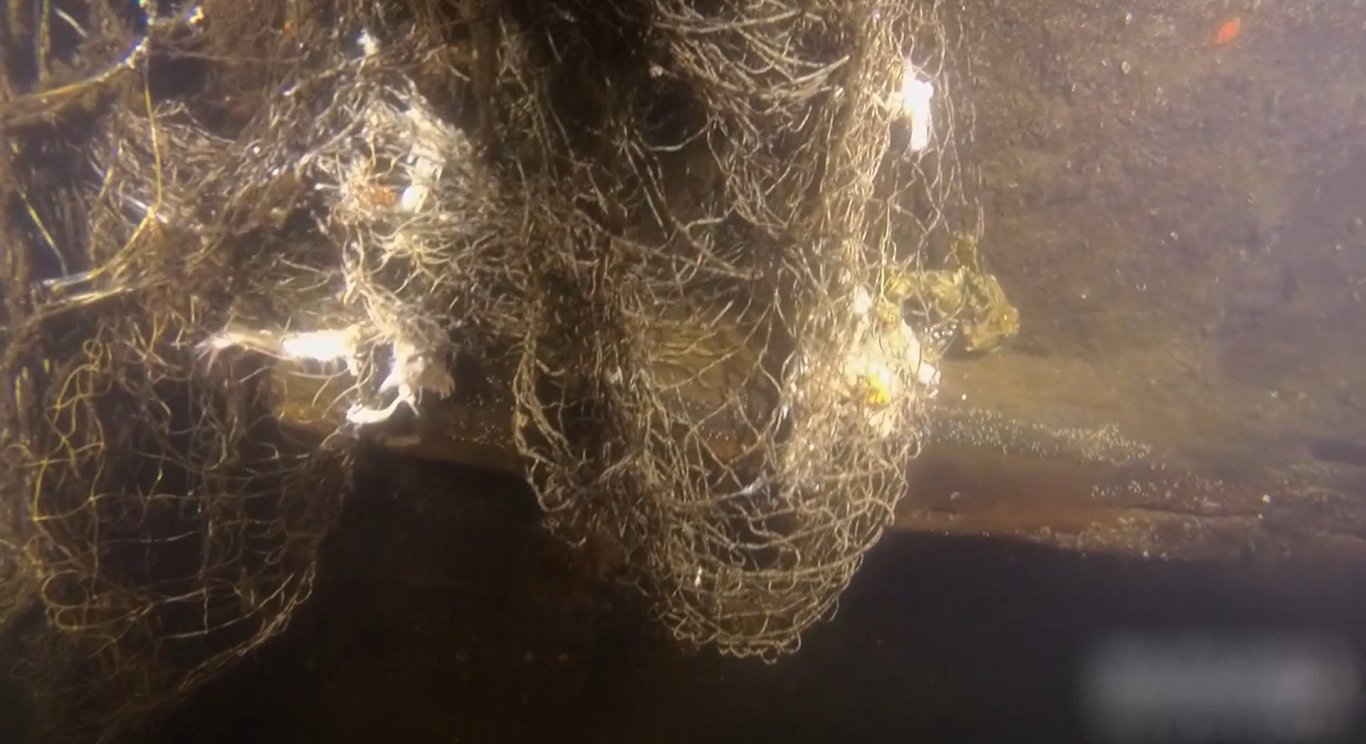
Underwater drones
"Fishermen have no interest in losing their nets often. They're quite expensive, so fishermen who actually fish legally and follow the rules usually don't lose their nets anyway. So around the world, these "ghost nets" are often linked to illegal fishing. Because they are left behind when illegal fishermen are forced to flee," said Magda Jentgen.
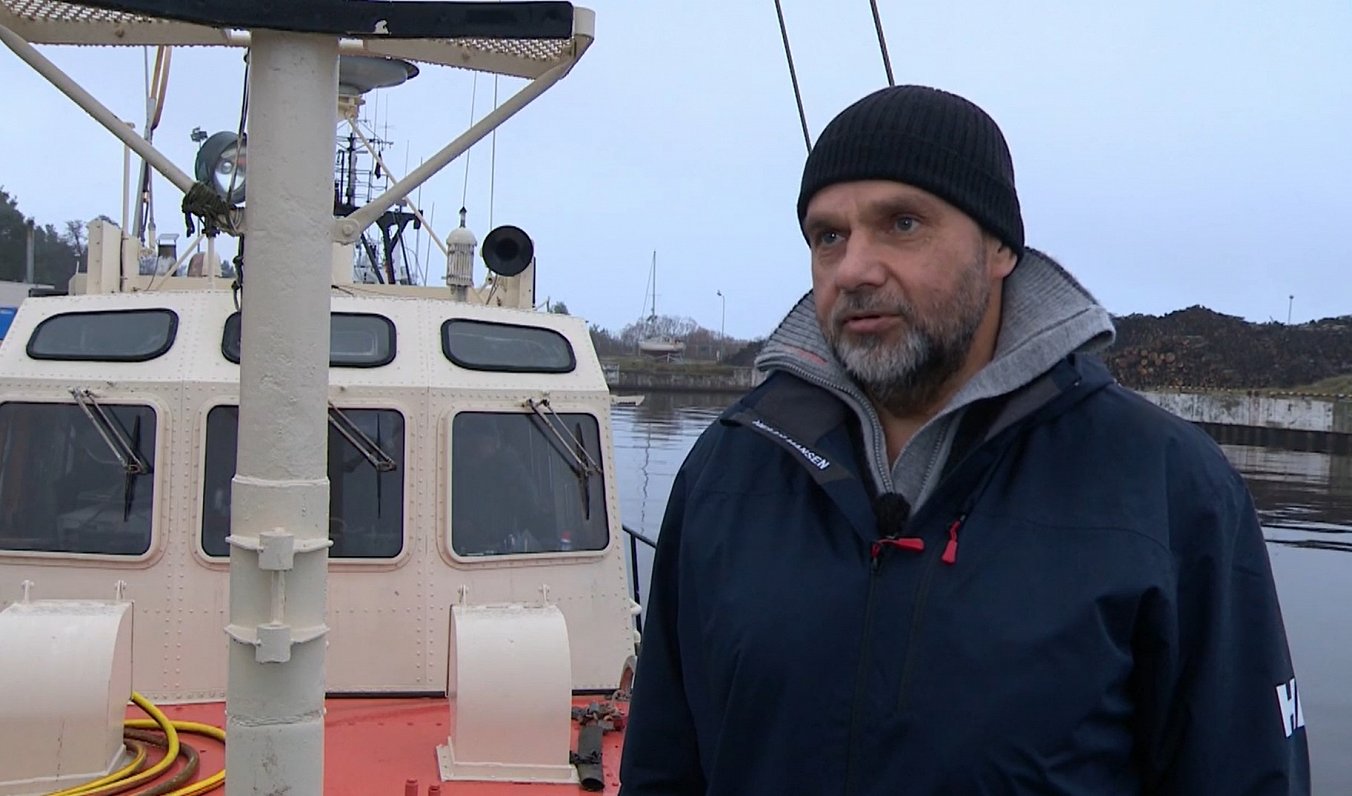
As weather permits and funding becomes available, the search and extraction of "ghost nets" will likely continue. There are indications of another net site on the coast of Engure.
"According to the stories, we know that there is an old, abandoned riser, but we need to find it. It is abandoned in an area where industrial fishing does not take place, and there are no exact coordinates. (..) We have not been able to find it yet," said Engure port manager Jānis Megnis .
Human resources are important for this work, but drones could also help. "It is clear that there is a field to work with scientists in order to be able to equip various underwater drones with the necessary equipment, so that the drone itself can do this. (..) In cooperation with the Technical University, local fishermen are preparing to present a project on innovative orientation, innovative products, with which such "ghost net" ships could be marked, so that after larger clean-up works are organized, you can normally know where there are and where there are not. This is our goal moving forward," said Megnis.
But where to put the nets once they have been retrieved? If such sea clean-up projects continue, there could be piles of nets weighing tons in the future. Scientists are also looking for ways to recycle ghost nets so they don't end up in landfills.




